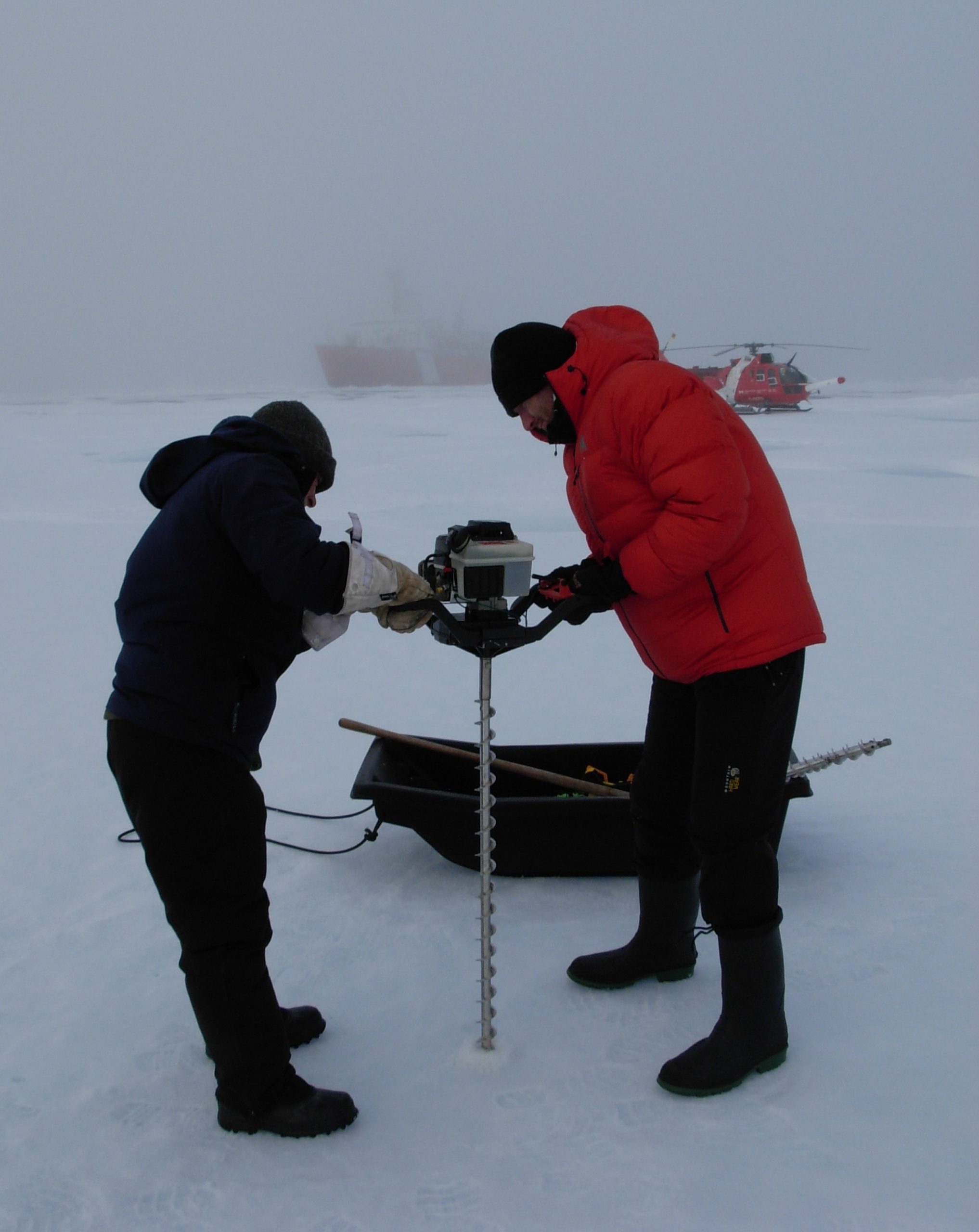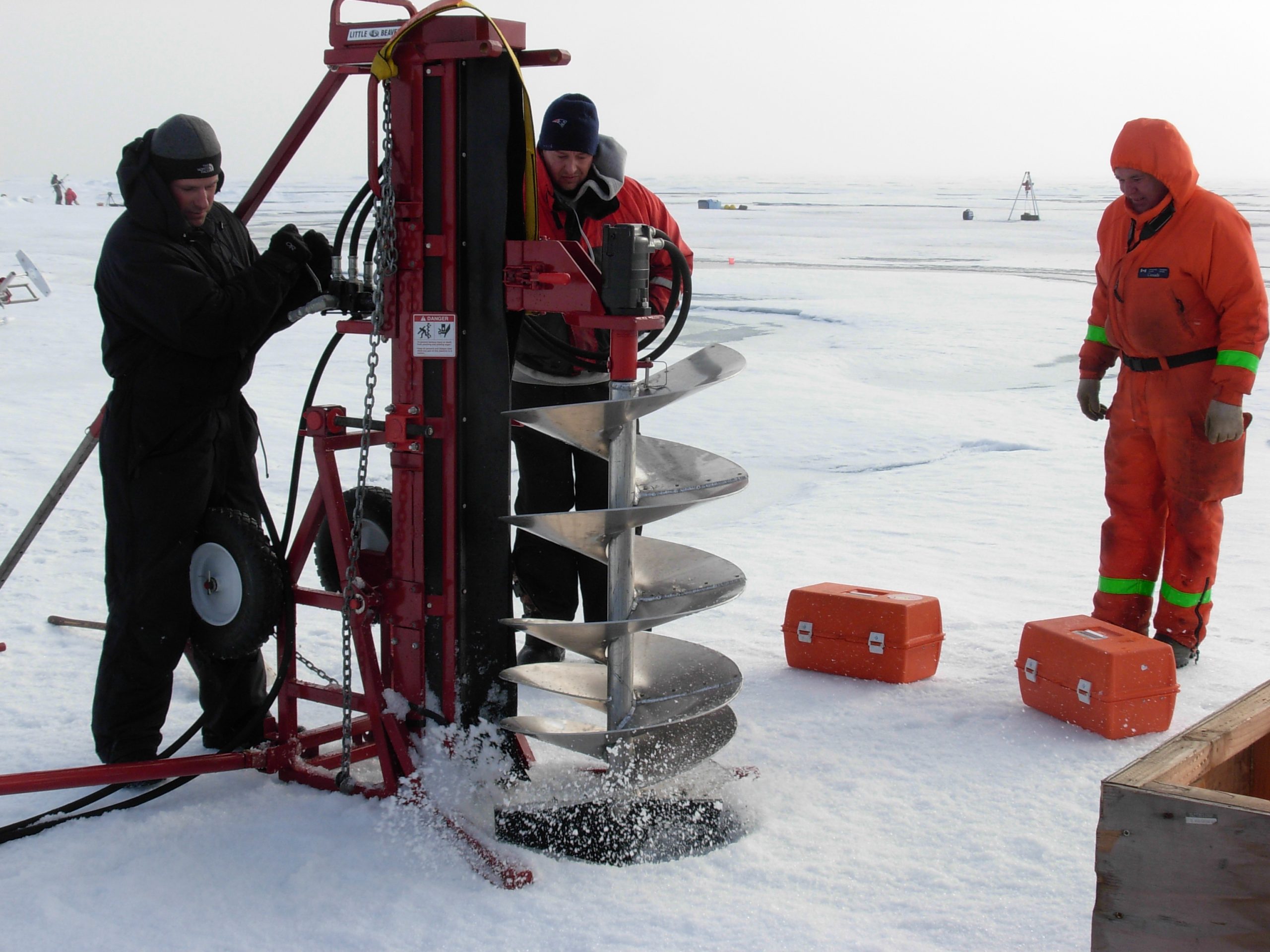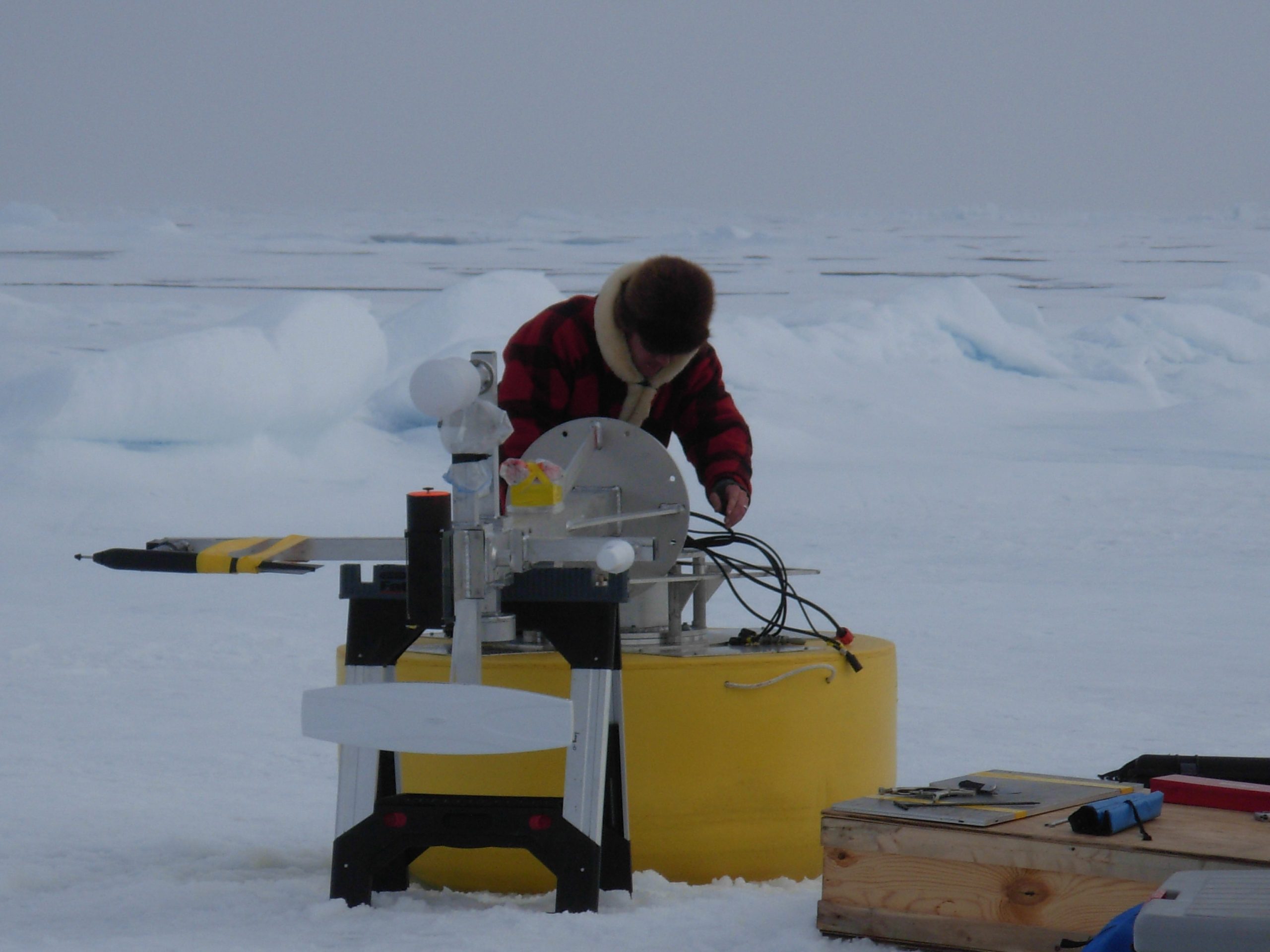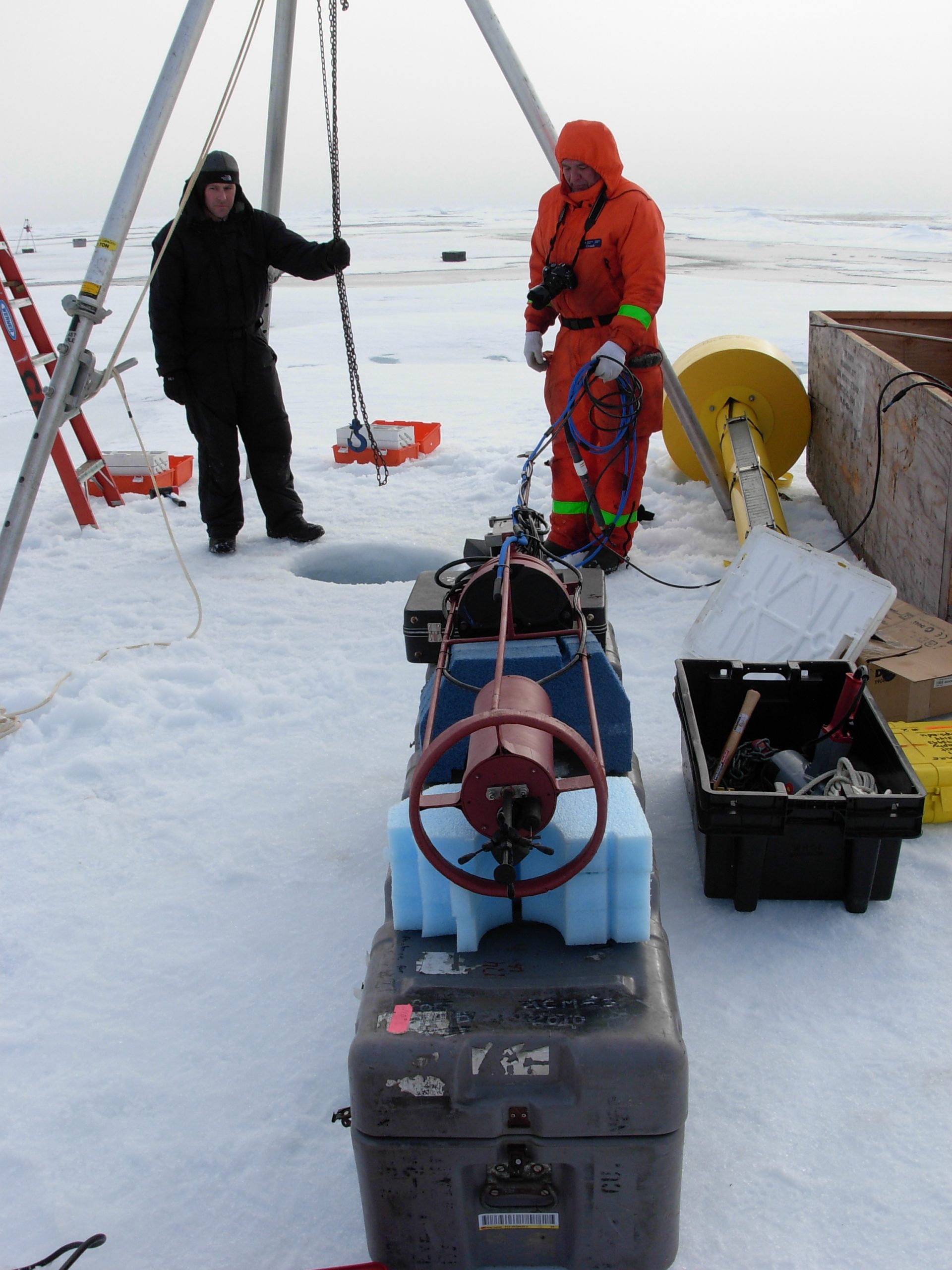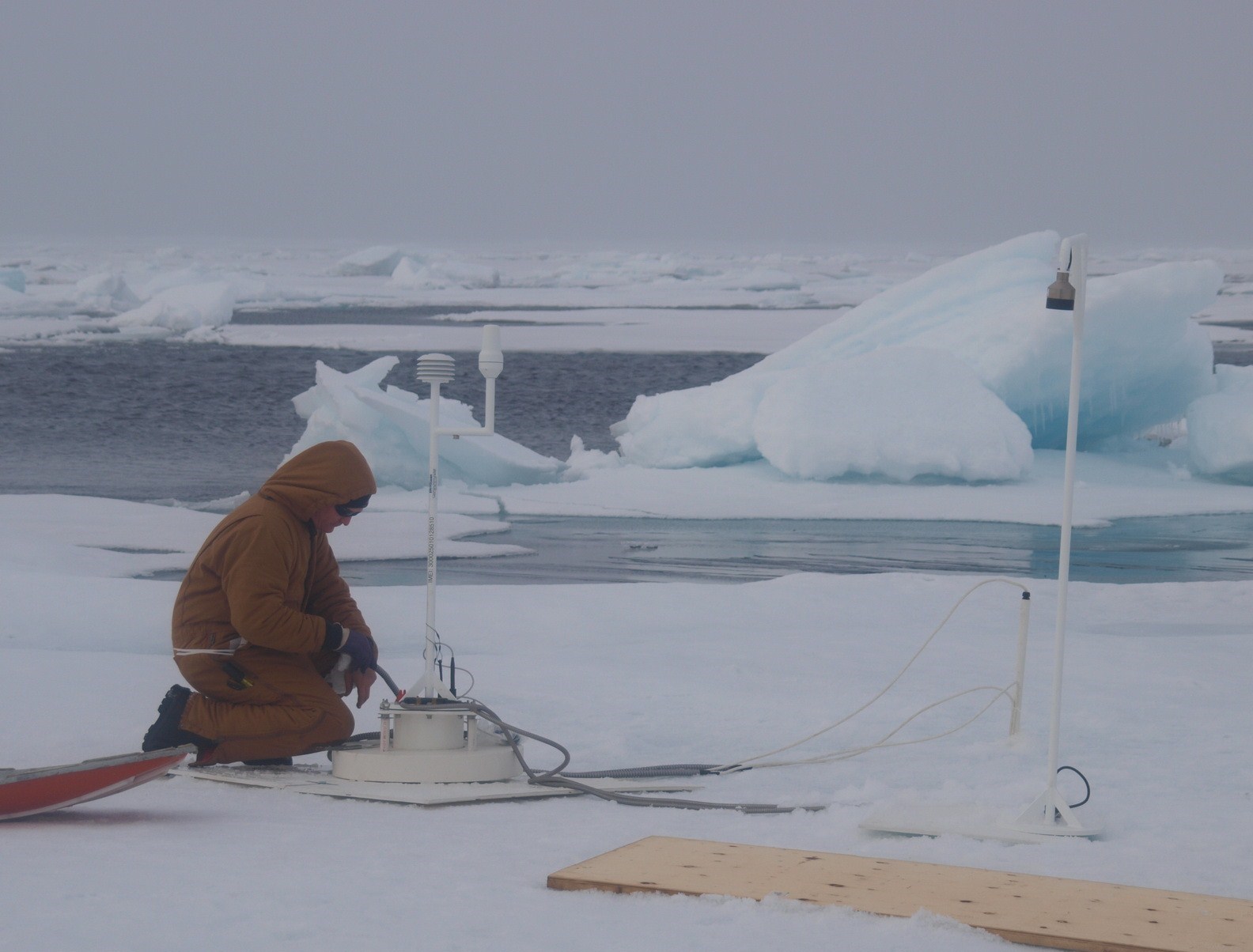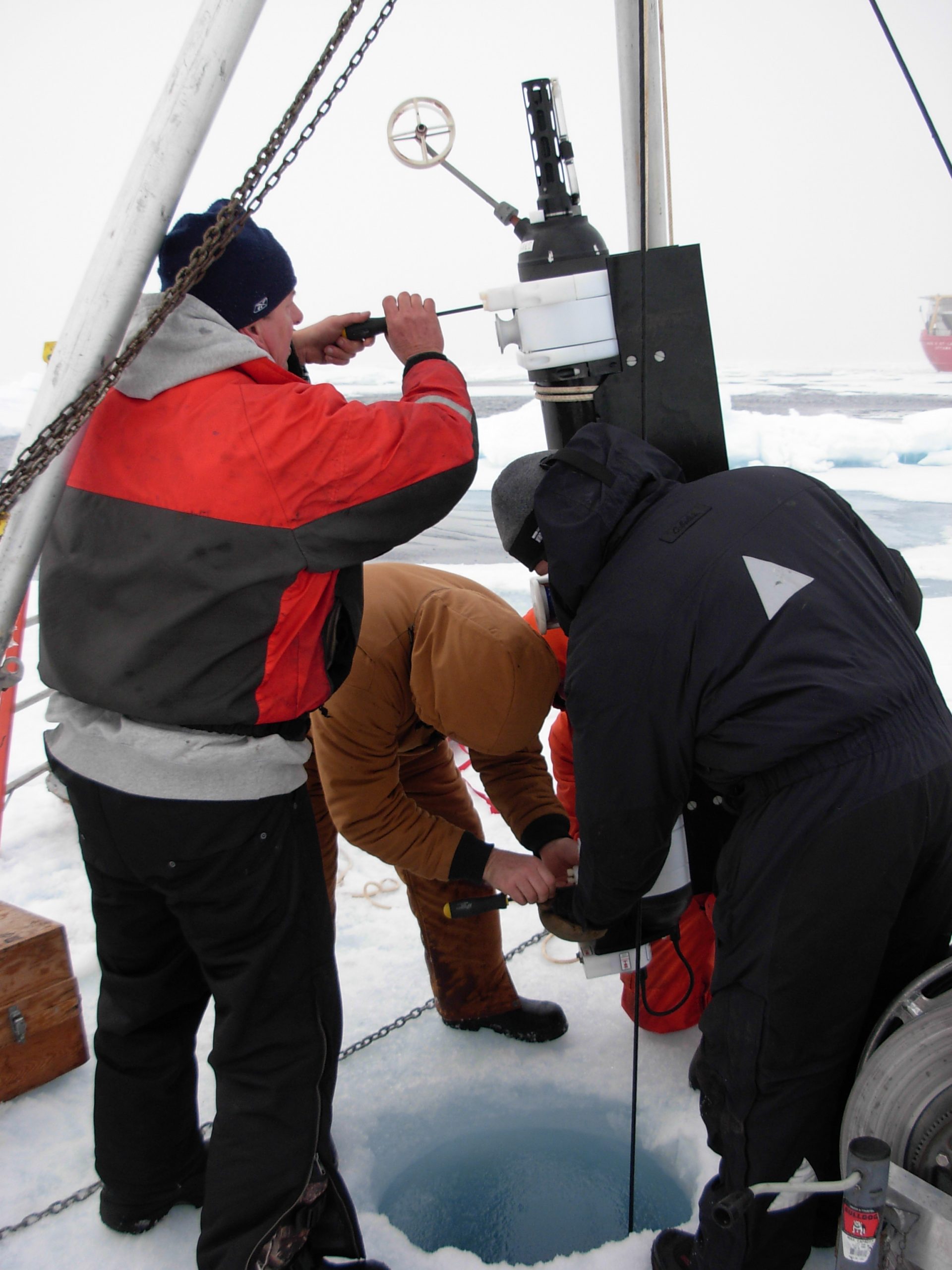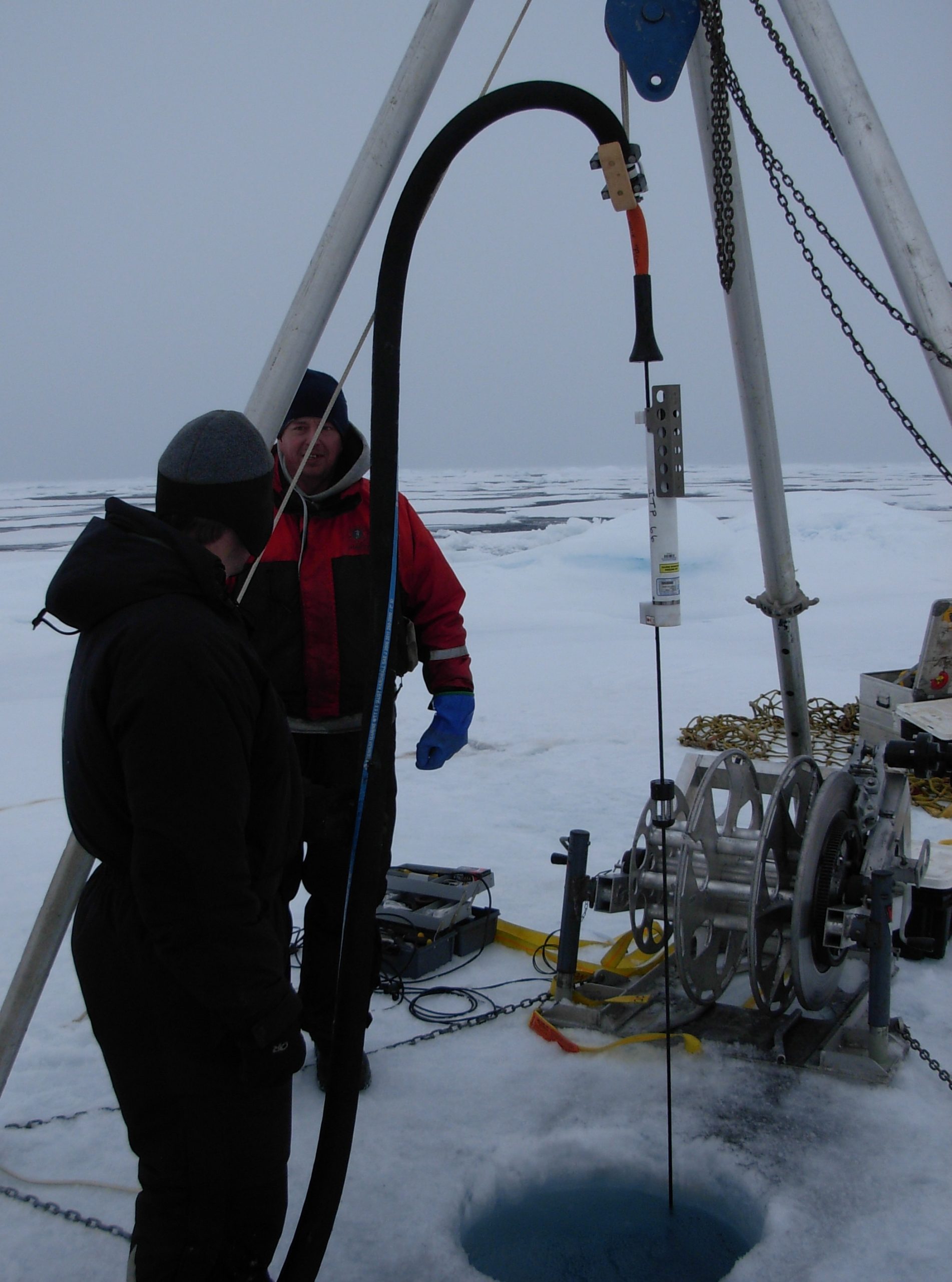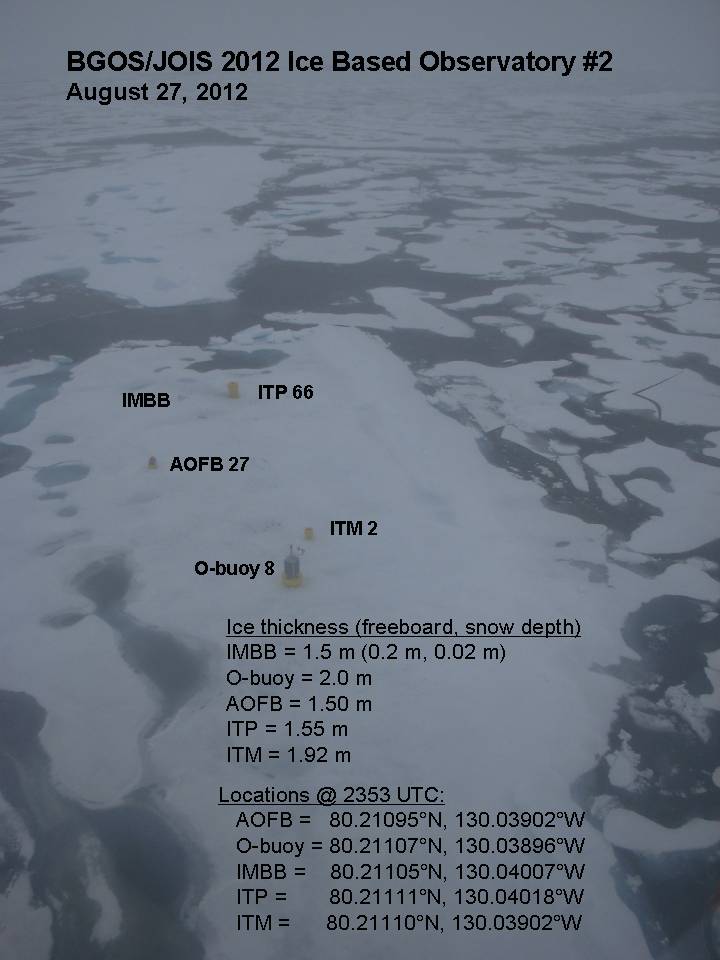ITP66 Deployment Operations
The morning that the second Ice-Based Observatory (IBO) during JOIS 2012 was deployed the region was characterized by mostly small ice floes with leads of open water everywhere, and air temperatures hovered just over freezing so creating scattered fog. Using the helicopter close to the ship, a floe which appeared to be somewhat larger and more robust that the surrounding ice was surveyed and found to be 1.5 m or more thick so sufficient for the ice station.
As in the previous ice station, numerous slingloads of instruments and equipment were flown onto the ice by helicopter for the buoy deployments and other sampling by other ice scientists. Using a 24” hydraulic auger rig, holes were drilled for the O-Buoy, AOFB, and ITP (to accommodate the extra diameter of the profiler due to the current meter sting and stabilizing fins). After the first hole was drilled, the O-buoy was lowered through the 2.0 m floe and its deployment team began mounting the superstructure. Then while the IMB was being deployed by a second group, a third group assembled and deployed the AOFB, followed by ITP 66, then ITM 2. As the cool damp day progressed, the wind picked up making for uncomfortable operations.
Unfortunately the ITP deployment was delayed and difficulties were encountered reprogramming the profiler so that it required repowering and rebooting. It appeared that the profiler problem was solved when the unit was first mounted on the tether and queried over the inductive modem circuit, however after the mooring was fully deployed it did not respond, while the microcat mounted on the tether did communicate over the same circuit. After 7 hours on the ice and deteriorating weather conditions, there was not sufficient time for a 3+ hour recovery of the profiler, so the ITP had to be left as it was with only the micocat providing seawater data.
More information and photos on the deployment operation are also available at: https://archives.whoi.edu/beaufortgyre/www.whoi.edu/page.do@pid=111536.html.
